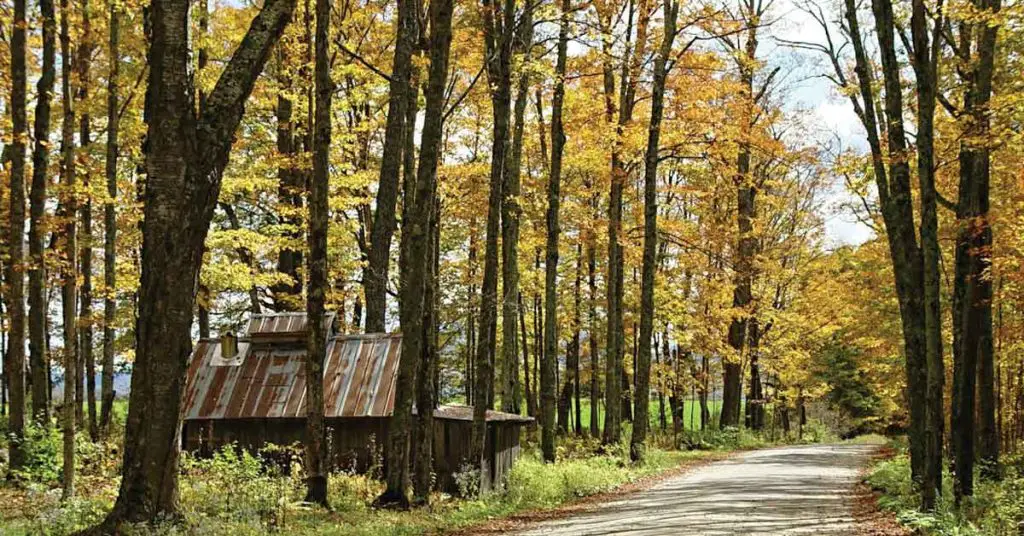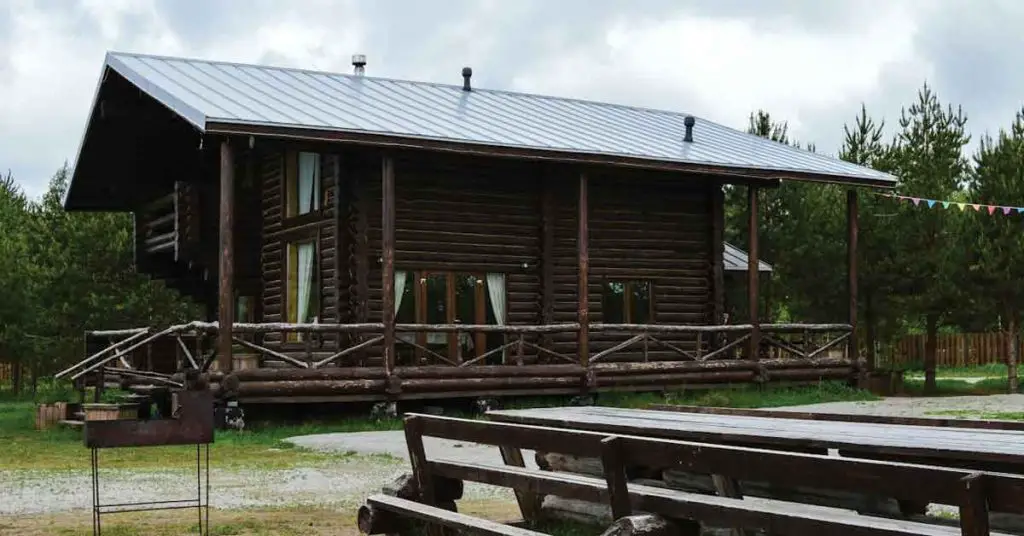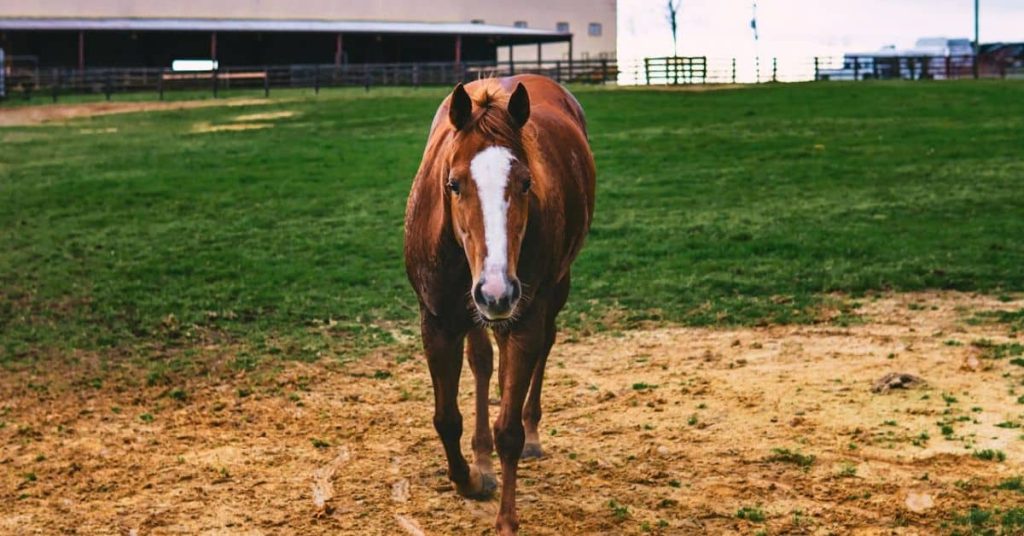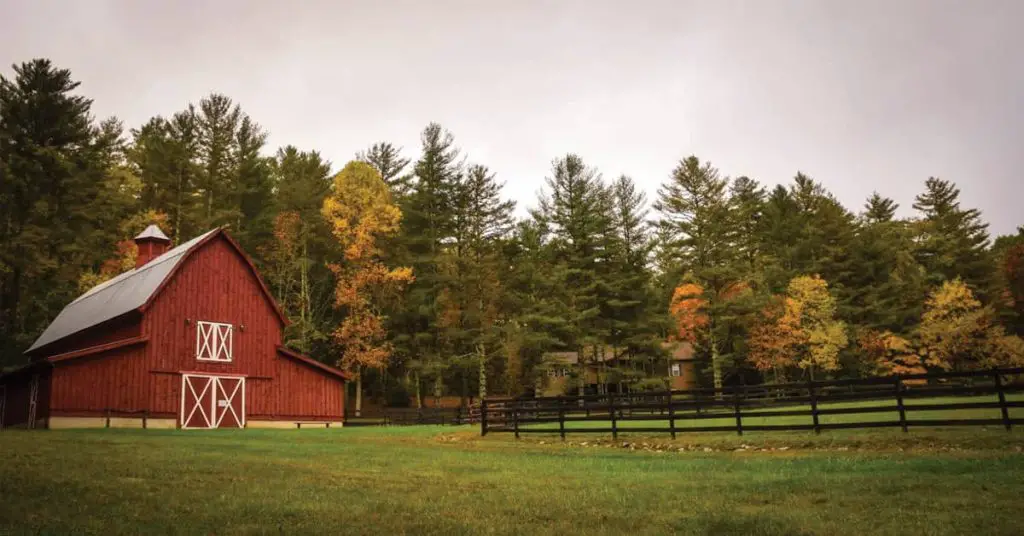Introduction: Homesteading in Iowa
It usually starts with a simple question—What if we just grew it ourselves? Maybe you’ve walked the farmers’ market in Des Moines, admired a neighbor’s backyard chicken coop in Cedar Rapids, or driven past an abandoned farmhouse and wondered what it might become with a little elbow grease and hope.
Homesteading in Iowa isn’t a far-off dream or something reserved for people with acres of land and generations of farming in their blood. It’s a very real, very doable lifestyle that’s calling out to more everyday Iowans—especially those craving a slower pace, deeper purpose, and a chance to reclaim self-sufficiency in the Heartland.
In this guide, Homesteading in Iowa Made Easy: Practical Tips for Beginners to Thrive in the Heartland, you’ll find:
- Beginner-friendly advice on finding land, growing food, and raising livestock
- Legal and zoning info specific to Iowa, broken down simply
- Realistic steps for off-grid living, food preservation, and community connections
- Helpful insights on Iowa’s unique climate, soil, and agricultural advantages
Whether you’re dreaming of a cozy cabin in Allamakee County, building a market garden outside Ottumwa, or just starting with a backyard plot and a compost bin, this guide is here to walk beside you—step by step.
Ready to turn that quiet little “what if” into something real and rooted? Let’s get started.
Why Iowa Is a Great Place to Start Homesteading
If you’ve been wondering whether homesteading in Iowa is still possible today, the short answer is—absolutely, yes! And not only is it possible, it’s a place where beginners often thrive thanks to Iowa’s deep agricultural roots, affordable land, and welcoming rural communities. Let’s break it down together, just like you’d hear over coffee at the local diner.
Can You Still Homestead in Iowa?
Many folks assume that “homesteading” means the old 1800s model of free government land. While those days are long gone, Iowa still offers plenty of room for modern homesteading dreams.
Here’s the good news:
- You can absolutely start homesteading in Iowa today, whether on a five-acre hobby farm near Decorah or a half-acre backyard garden in Ankeny.
- Some smaller towns (like Marne or Manilla) offer free land programs or incentives to attract new residents. While these are often tied to building a home, they can be an amazing launching pad for your homestead lifestyle.
- And don’t underestimate the “suburban homestead”—plenty of Iowans are turning urban backyards into food-producing mini-farms with chickens, bees, and raised beds.
As local homesteader Carrie S. from Pella shares, “We started with just a backyard flock of chickens. Five years later, we’ve got a thriving market garden and a small CSA—right here on an acre.”
Best Regions and Land Affordability
Now, let’s talk about where to dig your roots.
Iowa’s best homesteading regions vary depending on what you’re looking for:
- Northeast Iowa (Decorah, Waukon, Lansing): Rolling hills, strong local food scenes, and supportive communities.
- Southwest Iowa (near Council Bluffs, Atlantic): More affordable land prices and towns offering housing incentives.
- Central Iowa (Ames, Boone): Excellent access to farmers’ markets, universities, and cooperative extensions.
Land affordability is one of Iowa’s strongest draws. According to recent reports, you can still find rural plots under $5,000–$10,000 per acre—especially in western and southern counties. And if you’re willing to renovate, abandoned farmsteads can often be purchased affordably, offering both land and a historic home in one shot.
A quick tip: Check local real estate sites, tax-delinquent property lists, and community Facebook groups. You’ll often hear about hidden gems before they hit the market.
Benefits of Iowa’s Agricultural Heritage
Iowa’s reputation as the breadbasket of America isn’t just for big farms—it’s a massive advantage for homesteaders, too.
Why?
- Rich, fertile soils: Iowa’s loamy soil is a gardener’s dream, making it easier to grow vegetables, berries, and fruit trees with less fertilizer and amendment.
- Strong local food systems: With dozens of farmers’ markets, food co-ops, and farm-to-table restaurants, Iowa communities love supporting local producers.
- Supportive neighbors: Iowa’s rural culture often means that neighbors share tools, swap seeds, and pitch in on projects—a lifeline when you’re learning the ropes.
As Tom R., a homesteader outside Winterset, puts it: “When we moved here, our neighbors showed up with a tractor, a rototiller, and homemade bread. That’s Iowa—you’re not just on your own.”
In short, homesteading in Iowa offers a rare mix of affordability, community, and agricultural gold. Whether you’re dreaming of chickens, cows, or carrots, there’s no better place to roll up your sleeves and get started.
Now, let’s dive into what legal steps you need to know.
Understanding Iowa Homesteading Laws

When you’re diving into homesteading in Iowa, it’s not just about planting tomatoes or raising chickens—it’s also about understanding the legal side of things. And trust me, it’s a lot less intimidating than it sounds when you break it down into bite-sized pieces. Think of this section as the advice you’d get over the fence from a seasoned homesteading neighbor who’s been there and learned a few lessons the hard way.
What Qualifies You as a Homesteader?
First, let’s clear up one of the most common questions: “Do I have to own hundreds of acres to be called a homesteader in Iowa?” Nope!
In Iowa, being a homesteader is really about how you use your land, not just how much you own. Whether you’re on five acres or a suburban lot, here’s what generally qualifies you:
- Land use focused on self-sufficiency — This can include gardening, raising animals, preserving food, or using renewable energy.
- Intentional living and sustainability goals — Many Iowans embrace homesteading by cutting expenses, reducing waste, or producing their own food.
- Tax benefits under the Iowa Homestead Exemption (more on that below) — You can apply for this if you own and live on the property as your primary residence.
As Mason and Jill, a young couple homesteading near Fairfield, shared, “We only have two acres, but we raise chickens, keep bees, and grow most of our veggies. We’re living the homesteading dream without a big farm.”
Navigating Permits and Zoning Regulations
Now, let’s talk about the not-so-fun stuff: permits and zoning. But don’t worry—I’ll walk you through it.
- Building permits: Anytime you’re adding permanent structures (like a house, barn, or large shed), you’ll likely need a permit from your county or city. Small backyard coops or garden sheds usually fly under the radar, but always check local rules.
- Animal restrictions: Especially if you’re in a town or city, be sure to check ordinances on livestock. Some places allow backyard chickens or bees but ban roosters or goats. Out in rural Iowa? You’ve got much more freedom.
- Water rights and wells: If you plan to drill a well or set up an alternative water system, talk to the Iowa Department of Natural Resources (DNR) first. They’ll help you stay on the right side of the law.
- Zoning rules: Rural zones typically allow small-scale farming, but if you’re near town limits, confirm that your homestead activities align with local zoning.
Mary Jo, a homesteader near Sioux City, warns, “We thought we could keep a pig in town, but turns out it wasn’t allowed. Lesson learned—check before you buy or bring home animals!”
Iowa Homestead Exemption: What You Need to Know
Here’s a sweet little perk: Iowa’s Homestead Exemption. This state law offers a tax break and legal protection on your primary residence. Here’s what it means for homesteaders:
- You can apply for the exemption if you own and live on your land.
- It reduces the taxable value of your home by up to $4,850, lowering your property taxes.
- It provides protection against certain creditor claims, giving you more financial security.
To apply, you’ll file a simple form with your county assessor’s office—usually due by July 1 of the year you claim it. And here’s a tip: Mark it on your calendar the minute you close on your homestead property!
Dave, a retired homesteader near Decorah, says, “That homestead exemption saves us a few hundred bucks a year—not a fortune, but every little bit counts when you’re living off the land.”
When you understand the legal basics of homesteading in Iowa, you set yourself up for success. You’ll spend less time untangling red tape and more time doing what you love—whether that’s canning salsa, fixing fences, or watching your goats play king of the hill.
Finding and Buying Land
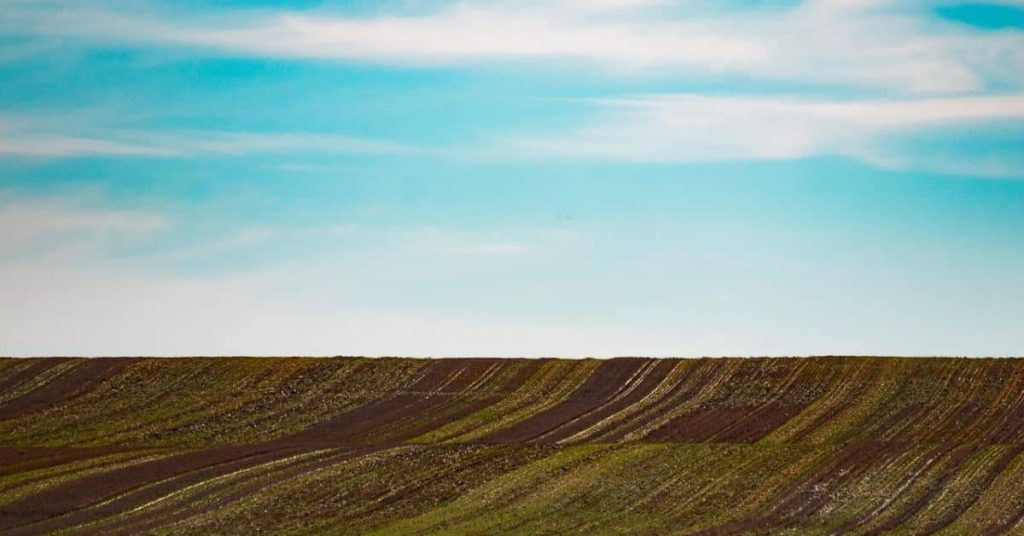
When it comes to homesteading in Iowa, one of the most exciting (and sometimes overwhelming) steps is finding the right piece of land to call home. Whether you dream of a quiet corner in the countryside or a fixer-upper farm with history, Iowa offers plenty of opportunities—you just need to know where to look. So, pull up a chair and let’s chat about how to find your perfect homestead spot.
Where to Find Land for Sale or Free Land Programs
Iowa is one of those rare states where, if you know where to dig (sometimes literally), you can uncover hidden gems.
- Rural counties: Counties like Appanoose, Wayne, and Decatur often have surprisingly affordable land with big open skies and ready-to-use farmland. Check local real estate listings and county websites, and don’t be afraid to visit in person—small-town bulletin boards sometimes hold listings you won’t find online.
- City initiatives: Believe it or not, some small Iowa towns like Marne and Manilla have offered free land programs or nearly free lots to attract new residents. Usually, these come with a promise to build within a set time, so make sure you’re ready for that commitment.
- Farm auctions: Keep an eye on local auction listings. Farm auctions, especially estate sales, can offer land at below-market prices, though you’ll want to do your homework beforehand.
Tom and Sara from southern Iowa shared, “We found our five-acre homestead through a county tax auction—needed some TLC, but we saved thousands compared to a realtor-listed property.”
Evaluating Land Quality and Price Per Acre
Not all land is created equal, especially when it comes to homesteading in Iowa.
- Soil quality: Iowa is famous for its rich black soil, but not every acre is prime farmland. Check the USDA Web Soil Survey or ask a local county extension agent to help assess soil type and drainage.
- Water access: Does the land have a working well? How deep is the water table? Are there creeks, ponds, or irrigation ditches? Reliable water access is a homesteader’s lifeline.
- Price per acre: Depending on the county and land condition, Iowa land typically ranges from $4,000 to $10,000 per acre for farmland. Timber or rougher land may be cheaper but may need clearing or soil improvement.
Linda, a homesteader near Mason City, advises, “We chose a slightly more expensive plot because it had a natural spring—we’ve never regretted paying extra for good water access.”
Exploring Abandoned Farms and Restoration Projects
There’s something deeply rewarding about breathing new life into an old farmstead.
- Check for solid bones: When looking at abandoned farms, inspect the foundation, roof, and structural integrity. Some older barns and farmhouses can be salvaged; others may be too far gone.
- Reclaiming land: Brushy pastures or overgrown fields can often be restored with some sweat equity, controlled burns, or rotational grazing. Consider it a long-term project, not an overnight fix.
- Research past use: Find out if the land was previously treated with chemicals or if old farm equipment or fuel tanks were left behind. It’s smart to request a basic environmental assessment.
Mike from near Fort Dodge recalls, “We bought an old farm that sat empty for 15 years. Clearing out the thistles was brutal, but two years in, we’ve got a thriving orchard and veggie garden where weeds once ruled.”
Start small and focus on what feels right for your family and goals. It’s easy to get caught up in dreamy acreage, but a well-chosen five acres can be more productive and joyful than 40 acres you can’t manage yet.
Here’s why this matters to you: the right land sets the stage for your homesteading success!
Building a Productive Iowa Homestead

Once you’ve got your land, it’s time for the really fun part—bringing it to life! Homesteading in Iowa offers some fantastic opportunities thanks to the state’s rich soils, four distinct seasons, and strong farming tradition. Here’s a neighborly breakdown to help you get started, whether you’re planting your first seeds or welcoming your first flock.
Best Crops for Iowa’s Climate
Iowa’s climate is a gardener’s dream—if you know how to work with it.
- Corn and soybeans: These are classic Iowa staples, but they’re not just for big farms. Many homesteaders grow small plots of sweet corn for fresh eating and dry corn for animals or grinding into meal.
- Heirloom vegetables: Tomatoes, peppers, zucchini, and heirloom beans thrive here, especially if you plant after the last frost (typically late April to early May). Rotate crops each year to keep your soil healthy.
- Berries: Strawberries, raspberries, and blackberries love Iowa’s soil. They require a little patience up front but reward you with years of sweet harvests.
Jennifer from northeast Iowa shared, “We started with a small patch of heirloom tomatoes and were shocked at how well they did. Now we trade produce with neighbors and even sell extras at the local farmers’ market.”
Recommended Livestock for Beginners
If you’re ready to add animals, Iowa’s mild summers and cold but manageable winters are great for hardy breeds.
- Chickens: They’re the classic gateway livestock. Start with a few hens, and you’ll soon be enjoying fresh eggs. Plus, they help control bugs and provide manure for compost.
- Goats: Perfect for keeping brush down and producing milk. Nigerian Dwarfs and Nubians are popular in Iowa for their temperament and productivity.
- Bees: Beekeeping has been booming across the Midwest. Bees help pollinate your garden and give you honey to boot.
- Backyard pigs: For those a little more adventurous, pigs can turn over garden plots and provide meat for the freezer. Just check local zoning rules first.
Sam, a first-year homesteader near Cedar Rapids, laughs, “Our chickens were the easiest part—our goats, on the other hand, keep us humble! But honestly, they’ve made homesteading in Iowa a joy for our kids.”
Managing Woodlots and Wildlife Habitats
Iowa isn’t all farmland—many homesteads have small woodlots or border natural areas.
- Sustainable forestry: If you have trees, selective harvesting of firewood or timber can help maintain healthy growth. Reach out to Iowa State University Extension for advice on local tree species and best practices.
- Wildlife habitats: Protecting native prairie patches or planting windbreaks benefits both your land and local wildlife like songbirds, deer, and pollinators.
- Pollinator-friendly zones: Adding wildflowers or prairie grasses helps bees, butterflies, and other beneficial insects thrive alongside your crops.
Ben, a homesteader outside of Decorah, shared, “We left part of our acreage in native prairie, and it’s been amazing to watch the wildlife return. Plus, it’s low maintenance!”
Start with what excites you most. Whether it’s a vegetable garden, a flock of chickens, or a little patch of prairie, small successes build momentum. And don’t worry—you’ll learn more from trial and error than from any book.
Practical Skills and Daily Life

One of the most rewarding (and sometimes messy!) parts of homesteading in Iowa is learning all the hands-on skills that help your family thrive day-to-day. From teaching kids to help in the garden to mastering your first canning project, it’s about building resilience—and making memories along the way. Let’s walk through a few essentials that will help you settle into daily life on your Iowa homestead.
Homeschooling and Family Life on the Homestead
For many Iowa families, homeschooling isn’t just about academics—it’s about weaving learning into daily homestead life.
- Flexible routines: Unlike a traditional school day, homestead homeschooling might start with feeding chickens or watering the garden. This rhythm teaches responsibility and keeps kids engaged.
- Integrating kids into chores: Even young children can collect eggs, help stack firewood, or sort harvested vegetables. Teens often take on more complex tasks like fence repair or animal care.
Jenna from Boone shares, “We were nervous about homeschooling at first, but it’s been the best decision for our family. Our kids have learned math measuring feed, science watching seeds sprout, and patience waiting for those tomatoes to ripen!”
Food Preservation Basics
With Iowa’s bountiful harvests, you’ll quickly realize you need to store some of that goodness for winter.
- Canning: Start with easy projects like tomato sauce, pickles, or applesauce. Many Iowa Extension offices offer beginner canning classes to teach you safe techniques.
- Drying: Herbs, apples, and even zucchini chips are simple to dehydrate and store in jars or bags.
- Freezing: Sweet corn, peas, and berries freeze beautifully and hold their flavor well into winter.
Mike, a homesteader near Council Bluffs, says, “There’s nothing like opening a jar of summer peaches in January. Once you taste your own preserves, you’ll be hooked.”
DIY Repairs and Self-Sufficiency Skills
On an Iowa homestead, calling a handyman for every little fix just isn’t practical—plus, doing it yourself is half the fun.
- Fencing: Learn to stretch wire, replace posts, and patch sections to keep animals safe.
- Tool sharpening: A dull axe or hoe is frustrating. Investing time in sharpening pays off in efficiency and safety.
- Basic carpentry: Build raised beds, repair coops, or craft simple shelves for storage. Start small, and you’ll gain confidence with every project.
Tom near Decorah jokes, “I never thought I’d enjoy fixing fence posts, but it’s become part of the rhythm of homesteading in Iowa. And there’s real satisfaction in knowing you can handle things yourself.”
Don’t try to master everything at once. Pick one or two skills each season, practice them, and let your confidence grow naturally. Before you know it, you’ll look back and realize just how far you’ve come.
Another tip worth remembering is: start small and build confidence over time.
Off-Grid Living and Renewable Energy Options
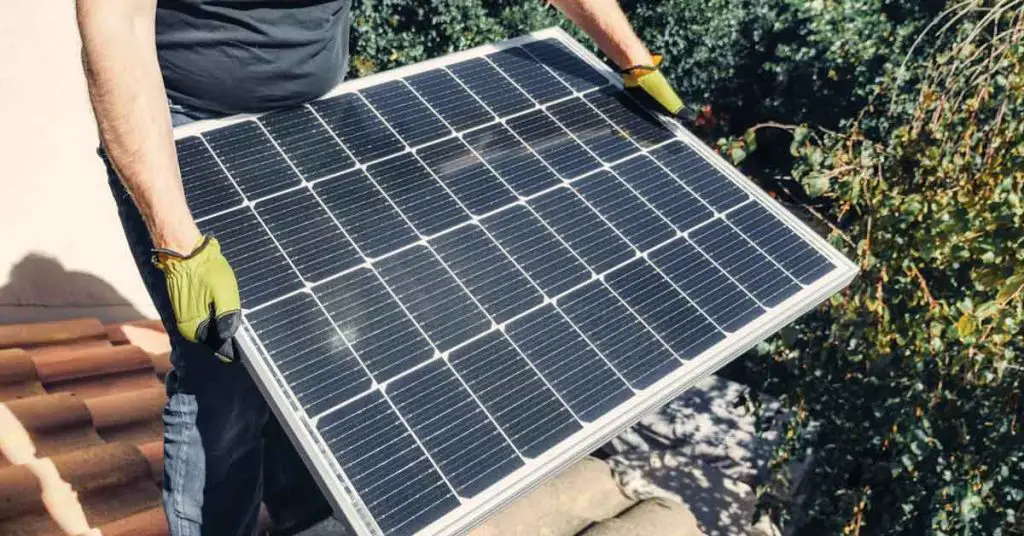
One of the most exciting (and sometimes intimidating) parts of homesteading in Iowa is the idea of going off-grid. Whether you’re looking to cut ties with the utility companies entirely or just want to reduce your bills and environmental footprint, Iowa offers some great opportunities for renewable energy and self-sufficient living. Here’s a friendly guide to help you get started—because we all know it’s a lot less overwhelming when someone’s been down the road before you!
Solar, Wind, and Backup Systems
In Iowa, where the sun shines bright and the wind rarely rests, you’re in luck when it comes to renewable energy.
- Solar panels: Many Iowa homesteaders start here. Even in cloudy months, you can generate a surprising amount of electricity. Start small—maybe just your barn or water pump—and expand as you get comfortable.
- Wind turbines: Iowa ranks among the top states for wind energy, especially in open rural areas. A small residential turbine can cover a good portion of your household needs.
- Backup systems: Batteries and backup generators are critical to keep essentials running during stretches of low sun or wind. Be sure to size your battery bank realistically—more than one homesteader has learned the hard way during Iowa’s long winter nights!
As Dave from near Storm Lake shares, “Our solar array powers most of the house year-round, but the small wind turbine keeps the lights on when the sun goes down. It’s a good balance, and it gives us peace of mind.”
Accessing Renewable Energy Incentives
One of the best-kept secrets about homesteading in Iowa? You don’t have to foot the entire renewable energy bill yourself.
- State and federal tax credits: Check with the Iowa Energy Office and the U.S. Department of Energy for programs that help offset installation costs.
- Grants for farmers and rural homeowners: Programs like the USDA Rural Energy for America Program (REAP) offer grants and loans for renewable energy systems.
- Local utility rebates: Some Iowa utility companies even offer cash rebates or net-metering programs for customers who install solar or wind systems and feed extra power back into the grid.
Sarah from Madison County recommends, “Don’t overlook your local electric co-op! They were surprisingly helpful when we set up our panels and walked us through the rebate process.”
Off-Grid Internet and Communication Tips
Staying connected while homesteading in Iowa is easier than ever, but it takes some planning.
- Satellite internet: Services like Starlink have transformed rural internet, offering reliable speeds even in Iowa’s most remote corners.
- Cellular boosters: If you’ve got decent cell signal but it’s a bit patchy, a booster can make all the difference for calls and hotspot use.
- Two-way radios: For families spread out across acres, walkie-talkies are an affordable and surprisingly effective solution for staying in touch.
Eric, a homesteader near Ottumwa, laughs, “We may be off-grid, but I’m still posting pictures of our garden on Instagram. Between Starlink and a good cell booster, we’re as connected as we want to be.”
Start with one system—solar or wind—and learn the ropes before adding more. Off-grid living doesn’t have to mean doing everything at once, and every small step toward self-sufficiency brings you closer to your homesteading goals.
Managing Challenges on Your Iowa Homestead

Let’s be honest — homesteading in Iowa is deeply rewarding, but it’s not without its challenges. From hungry deer raiding your garden to Midwest blizzards that knock out power, there’s always something testing your grit. But here’s the good news: generations of Iowans have faced these same obstacles, and you don’t have to figure it all out alone. Here’s some practical advice, along with a few neighborly stories, to help you prepare and thrive.
Wildlife and Pest Control
Ask any Iowa homesteader and they’ll tell you: sharing your land with nature is part of the deal, but sometimes nature doesn’t play fair.
- Deer-proofing your garden: Install tall fencing (at least 8 feet) or use deer-resistant plants like lavender and yarrow as a natural barrier.
- Raccoon-proofing the chicken coop: These clever little raiders can unlatch simple locks, so use heavy-duty hardware or carabiner clips on doors and nesting boxes.
- Guarding against coyotes and foxes: Livestock guardian dogs (LGDs) like Great Pyrenees or Anatolian Shepherds have saved many Iowa homesteaders from heartbreak.
Mary from near Decorah shared, “After losing a few chickens to a sly fox, we invested in better coop latches and added a solar motion light — no nighttime visitors since!”
Coping With Extreme Weather
If you’re homesteading in Iowa, you’ll quickly learn that the weather has its own personality — and it’s not always kind.
- Tornado season prep: Install a storm shelter or designate a basement area with emergency supplies like water, nonperishables, a flashlight, and a battery-powered radio.
- Managing heavy rains: Ensure good drainage around barns and gardens. Simple swales and raised beds can make a huge difference when the rains hit.
- Surviving winter storms: Keep backup heating like wood stoves ready, and store extra feed, hay, and water for animals. Don’t forget to winterize water lines to avoid costly freeze damage.
Paul near Ames says, “The first winter we underestimated just how quickly the snow can pile up. Now we stock up on feed and have a snowblower on standby. Lesson learned!”
Navigating Supply Shortages and Isolation
Rural life can feel isolating, especially when the roads are slick or the feed store’s shelves are bare.
- Build local connections: Join local Facebook groups, attend the farmers’ market, or connect with a county extension office. Trading seeds, feed, or tools with neighbors builds resilience.
- Plan ahead: Keep a rolling stock of essentials like animal feed, pantry staples, and fuel. Use bulk orders and local co-ops to save money and time.
- Mental health check-ins: Isolation is real. Make time for social visits, phone calls, or even online homesteading forums to stay connected and sane.
Becky from Mount Ayr wisely points out, “I learned early that it’s okay to ask for help — when the ice storm took out power, our neighbors showed up with a generator and hot coffee. That’s Iowa for you.”
Challenges will come, but they’re part of what makes homesteading so fulfilling. Approach each problem with patience, resourcefulness, and a little Iowa grit — you’ll surprise yourself with what you can handle!
Managing Extreme Weather on Your Iowa Homestead

When you’re homesteading in Iowa, one of the biggest challenges you’ll face is the weather — and trust me, Iowa loves to keep homesteaders on their toes. From spring downpours that turn your garden into a swamp, to bone-chilling winters that test your livestock shelters, managing extreme weather isn’t just smart — it’s essential. Let’s break it down with some real-world tips and local wisdom.
Heavy Rain and Flooding Prep
Iowa’s spring and summer rains are no joke — one good storm can wash out your garden or drown your seedlings. But with the right prep, you can turn your homestead into a resilient oasis.
- Raised garden beds: Building raised beds (12–18 inches tall) can save your crops from soggy soil. Bonus tip: fill them with a mix of local topsoil and compost to improve drainage.
- Drainage ditches and swales: Direct water away from critical areas like the barn, garden, and home foundation. Simple ditches or shallow swales along the contour of your land can slow runoff and prevent erosion.
- Choose flood-tolerant crops: In wetter spots, plant crops like rice, sorghum, or certain heirloom corn varieties known to handle wet feet better.
Tom near Waverly shared, “After losing my first-year tomatoes to heavy rain, I put in raised beds and a few drainage trenches. Now, even during downpours, my garden stays productive.”
Winter Preparedness
Ah, Iowa winters — where the snow piles high and the temperatures drop so low your breath feels like it’s freezing mid-air. Keeping your homestead running smoothly during winter takes a bit of planning but pays off in peace of mind.
- Insulate animal shelters: Add extra bedding like straw, use windbreaks, and make sure shelters have draft-free ventilation. Simple DIY insulation with old tarps or rigid foam boards can go a long way.
- Secure water supplies: Heated water buckets, insulated troughs, or even an old-fashioned stock tank heater will prevent water from freezing and save you from hauling buckets in frigid temps.
- Stockpile essentials: Hay, feed, firewood, and pantry staples — aim for at least 2–4 weeks of supplies. Iowa blizzards can cut off access to town quickly.
Sarah from near Sioux City says, “The first year we lost water in the barn for a week. Now we wrap the pipes with heat tape and keep a few five-gallon jugs in storage. It’s saved us more than once.”
Weatherproofing is an ongoing process when you’re homesteading in Iowa. Keep a notebook of what worked and what didn’t each season — your future self will thank you. And when in doubt, don’t hesitate to call that seasoned farmer down the road; chances are, they’ve seen it all.
Preserving and Cooking With Iowa’s Bounty
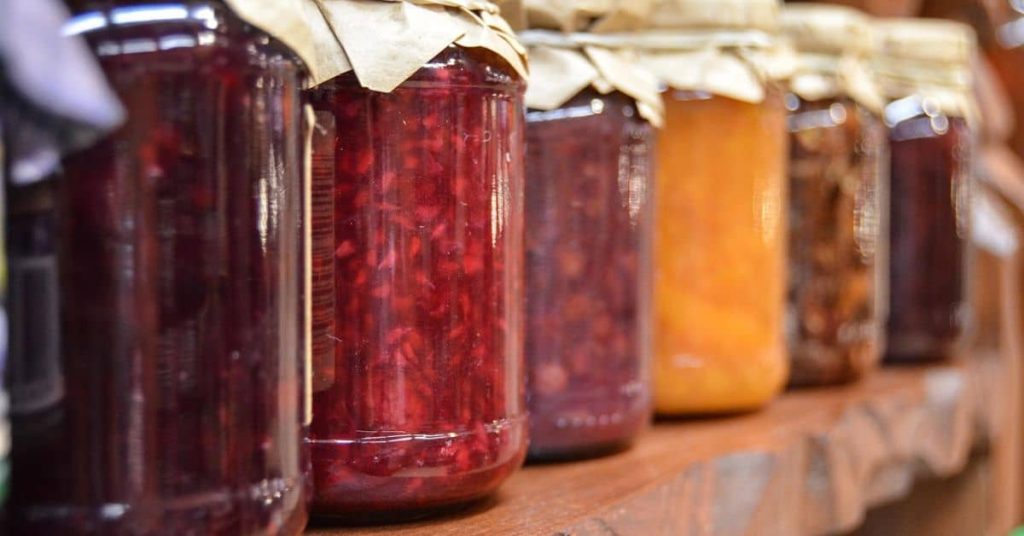
One of the true joys of homesteading in Iowa is reaping the rewards of your hard work — and nothing beats the taste of homegrown food fresh from your own land. But if you’ve ever looked at a mountain of sweet corn or bushels of apples and wondered, “What on earth do I do with all this?” — don’t worry. You’re not alone! Here’s how Iowa homesteaders turn their harvest into delicious meals and pantry treasures, season after season.
Farm-to-Table Recipes
Iowa is famous for its sweet corn, pork, apples, and honey, and your kitchen can become the heart of your homestead when you know how to put these local staples to work.
- Sweet corn magic: Grill it fresh, freeze it off the cob, or toss it into corn chowder. For an Iowa favorite, try making Mexican-style street corn (elote) with mayo, lime, and cotija cheese.
- Pork done right: Whether you raise your own hogs or buy from a neighbor, nothing beats Iowa pork. Think slow-cooked pulled pork, brined pork chops, or homemade sausage.
- Apple treasures: Apple pie, applesauce, apple butter — enough said. You can also dry apple slices for snacks or dehydrate them for baking later.
- Honey goodness: Spread it on fresh bread, stir it into tea, or use it in glazes for pork and chicken. If you’re beekeeping, you’ll have plenty to experiment with.
Emily from Decorah shares, “We always make a big batch of corn salsa and freeze it in pint jars. It’s like a little taste of summer on a snowy January day.”
Canning and Freezing Basics
When your garden’s overflowing, it’s time to think beyond the dinner table — and into the pantry and freezer. Here’s how homesteading in Iowa families keep the bounty going all year.
- Canning tips: Start simple with water-bath canning for jams, jellies, pickles, and tomatoes. When you’re ready, graduate to pressure canning for green beans, soups, and meat.
- Freezing made easy: Blanch veggies like sweet corn, green beans, and broccoli before freezing to lock in color and texture. Use freezer-safe bags or vacuum seal for best results.
- Label everything: Trust me — you will forget what’s in that jar or bag by February. Label with name and date to save yourself the guessing game.
Mark, a homesteader near Ames, says, “The first year, we froze everything. The next year, we canned. Now we do both — and the kids help label and stack the shelves. It’s become a family ritual.”
Don’t try to do it all in one weekend. Spread out your preserving projects, and invite friends over to help — it’s more fun and goes twice as fast. That’s the real spirit of homesteading in Iowa.
Connecting With Iowa’s Homesteading Community

When you’re starting out with homesteading in Iowa, it’s easy to feel like you’re doing it all on your own — but here’s the good news: you don’t have to. Iowa’s homesteading and farming community is famously generous, welcoming, and full of folks eager to swap tips, share tools, or just sit down for a chat over coffee. Let’s talk about how you can plug into this incredible network.
Local Events and Fairs
Nothing beats meeting people face-to-face, and Iowa offers some of the best gatherings for homesteaders you’ll find anywhere.
- Iowa State Fair: This iconic event isn’t just about corndogs and butter sculptures. Check out the agricultural exhibits, 4-H showcases, livestock competitions, and master gardener demos. You’ll meet farmers, homesteaders, and backyard gardeners from all over the state — many of whom are happy to share advice and stories.
- Homesteaders of Iowa Expo 2025: Mark your calendar! This growing event brings together experienced homesteaders, beginners, and vendors offering everything from heirloom seeds to off-grid gear. There are hands-on workshops, expert talks, and plenty of chances to swap ideas with like-minded folks.
Becca from Mount Vernon told me, “I made my best homesteading connections at the Expo last year. I came home with new friends, a sourdough starter, and way too many seed packets — no regrets!”
Finding Mentorship Through Beginning Farmer Networks
If you want guidance that’s a little more personal, Iowa has fantastic resources to connect you with mentors and learning opportunities.
- Workshops: Groups like the Practical Farmers of Iowa and the Beginning Farmer Center offer workshops on everything from organic gardening to raising small livestock. These sessions are great for building your skillset and meeting locals doing the same work.
- Equipment sharing and co-op buying: Many small-scale farmers and homesteaders pool resources through informal networks or co-ops, making it easier to afford expensive tools, seed orders, or even bulk animal feed.
- Mentorship programs: Several statewide initiatives match beginners with experienced farmers for mentorship. It’s a smart way to avoid costly mistakes — and you often end up with a lifelong friend.
Jared, a young homesteader from Boone, shared, “My mentor taught me everything about pasture rotation and fencing. It saved me months of trial and error — and I even got invited over for Thanksgiving!”
Don’t be shy! Most folks involved in homesteading in Iowa are more than happy to lend advice, recommend a good supplier, or help troubleshoot a stubborn garden pest. A simple “hello” at the fair or a message in a local Facebook group can open a lot of doors.
Resources and Expert Tools

When it comes to homesteading in Iowa, you don’t have to reinvent the wheel — there’s a treasure trove of expert tools, local programs, and online communities ready to help you thrive. Whether you’re planning your first chicken coop or troubleshooting your garden soil, the right resources can make all the difference. Let’s break down some of the most trusted tools and networks to help you on your journey.
USDA and Iowa Extension Services
First up, don’t overlook the USDA. Their official website is packed with valuable resources tailored for homesteaders and farmers across the country. Here you’ll find:
- Climate zone maps
- Soil health recommendations
- Crop-specific planting guides
For Iowa-specific advice, turn to the Iowa Extension Services, which provide seasonal tips, pest management advice, and even downloadable garden calendars.
Mark from northeast Iowa told me, “I check the Extension’s soil moisture updates religiously in spring — it’s saved my tomato crop more than once.”
Iowa State Extension and Beginning Farmer Programs
The Iowa State Extension is one of the most hands-on, beginner-friendly networks you’ll find. Their programs include:
- Workshops on organic gardening, livestock care, and food preservation
- Mentorship opportunities through the Beginning Farmer Center
- Grants and cost-share programs for small-scale producers
They even offer webinars and online courses if you’re short on time or can’t travel to an event.
Emily from Jefferson shared, “The goat-keeping workshop I took through Iowa State was worth its weight in gold — I avoided so many rookie mistakes.”
Online Homesteading Communities and Recommended Blogs
Sometimes the best advice comes from fellow homesteaders just like you. Look for:
- Online communities: Facebook groups like Iowa Homesteaders Network or forums on Reddit’s r/homestead are goldmines for real-life tips, troubleshooting, and moral support.
- Blogs and YouTube channels: Follow local homesteaders who share their journeys — they often offer down-to-earth, Iowa-specific insights you won’t get from a textbook.
“I check a couple of Iowa homesteading blogs before making big decisions,” says Brian from Decorah. “They’ve been through the same weather, soil, and challenges I face.”
Bottom line? Whether you’re tapping into national tools like the USDA, leaning on Iowa Extension, or chatting with locals online, the resources for homesteading in Iowa are out there and ready to help you succeed.
Recap: Your Next Steps Toward Homesteading in Iowa
As we wrap up this guide, here’s what to keep in mind from Homesteading in Iowa Made Easy:
- Focus on land quality — check soil, water access, and zoning before buying.
- Understand Iowa’s homesteading laws to protect your home and land.
- Celebrate small wins — whether it’s your first canned tomatoes or a sturdy DIY fence, they all matter.
Homesteading isn’t about perfection; it’s about progress.
Start Small and Learn As You Go
Remember, you don’t have to do everything at once. Start small: maybe with a backyard garden, a few chickens, or learning to preserve summer’s harvest. With each season, you’ll build resilience and confidence. Homesteading in Iowa Made Easy is all about helping you grow at a pace that fits your life.
As one local homesteader, Sarah from Cedar Rapids, puts it, “I started with just two raised beds and a dream — now we have a thriving little homestead that feeds our family year-round.”
Share Your Journey with Us
We’d love to hear your Iowa homesteading story! Share your wins, struggles, or questions in the comments below — your experience could inspire someone else.
Want more inspiration? Don’t forget to subscribe to our newsletter for practical tips, seasonal guides, and local event updates — let’s grow this homesteading journey together!
Frequently Asked Questions About Homesteading in Iowa
1. Can you still homestead in Iowa?
Yes, you can! While the original Homestead Act is no longer active, Iowa still supports modern homesteading through land sales, small-scale farming, and self-sufficiency practices on rural properties. You can buy land, grow food, raise animals, and even claim a homestead exemption on your primary residence.
2. What qualifies you as a homesteader in Iowa?
In Iowa, a homesteader is typically someone who owns and lives on a rural property, grows food, raises livestock, and practices self-sufficiency. There’s no formal license, but zoning, water rights, and building codes apply, so it’s wise to check local county laws.
3. Are there free land programs in Iowa?
Yes, some rural Iowa towns offer free land incentives to encourage new residents. For example, towns like Marne and Manilla have programs that provide free residential lots if you build a home within a set timeline.
4. How much does land cost for homesteading in Iowa?
As of 2024, rural land in Iowa averages around $7,500–$10,000 per acre, depending on soil quality and location. Abandoned farms and tax-delinquent properties may be more affordable for budget-conscious homesteaders.
5. Is off-grid living legal in Iowa?
Yes, off-grid living is legal in Iowa, but you must follow local building codes, zoning regulations, and waste management laws. Solar and wind systems are allowed, and there are state and federal energy incentives available.
Disclaimer: The information provided in this article is for general informational purposes only and is not intended to be a substitute for professional advice. The author of this article does not claim to be an expert in homesteading and the information provided should not be relied upon to make decisions about your own homesteading journey. Please do your own research and consult with a qualified professional before making any decisions about your homestead.
Share via:
Shaun Alexander is the main writer and editor for HomesteadingSimple.com. With a strong passion for homesteading and sustainability, Shaun has dedicated his life to learning and sharing information about a simple, fulfilling existence tied to the land. His expertise ranges from gardening and livestock management to off-grid living and DIY projects, reflecting the diverse skills necessary for a successful homesteading lifestyle. Shaun’s goal is to inspire and educate others about the possibilities of homesteading, whether in rural, suburban, or urban settings, and to provide practical advice and tips for both beginners and seasoned homesteaders. He believes in a future where more people return to their roots, embracing a life of self-sufficiency and harmony with nature.


